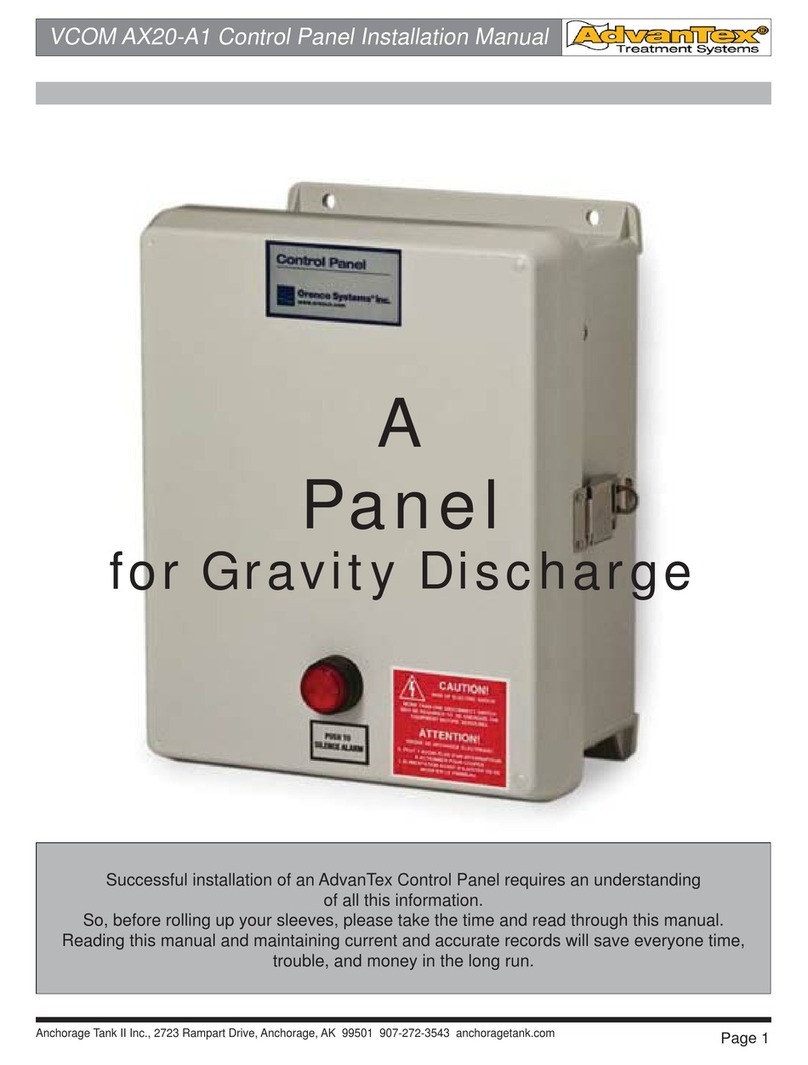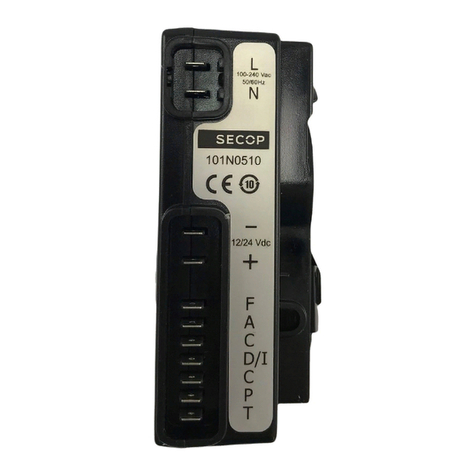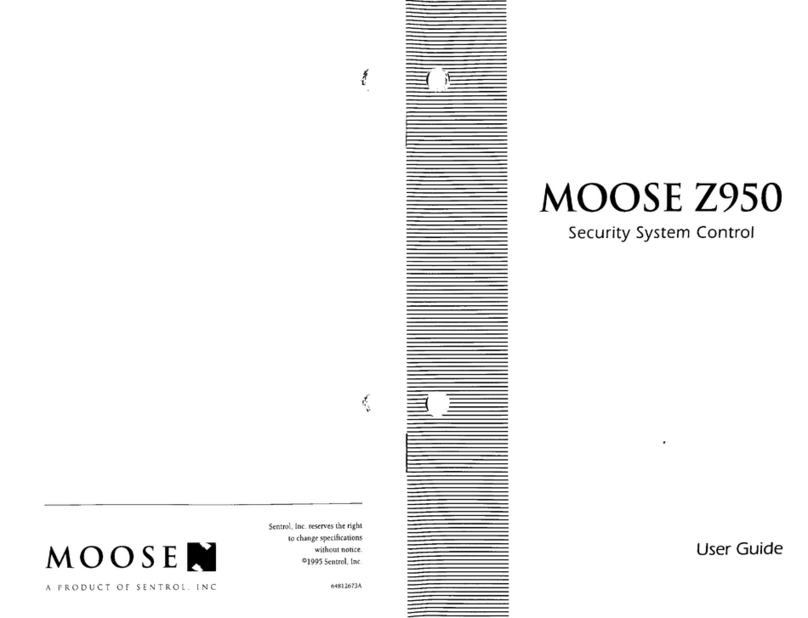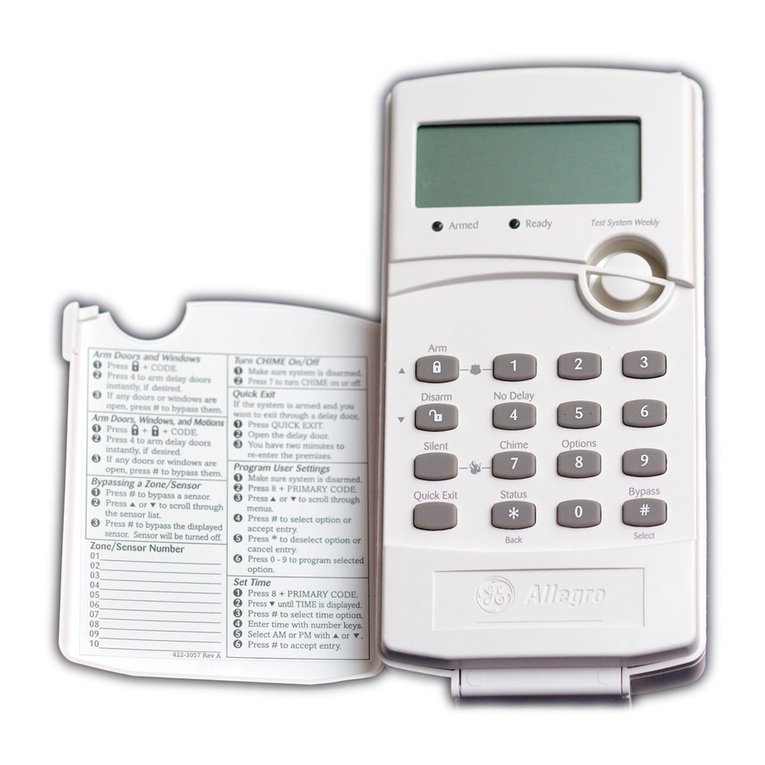Rocketronics ELS 4 Basic User manual

ELS 4 BaSic
ENGLISH
Operating instructions
This manual describes the commissioning and use of
the cycle controller ELS 4 BASIC.
TRANSLATION OF THE ORIGINAL
OPERATING INSTRUCTIONS


The distribution and reproduction of this document, its use and communication of its con-
tents is strictly prohibited. not permitted, unless expressly conceded. Contraventions obligate
to Compensation. All rights in the event of patent grant or utility model registration. reserved.
All product designations mentioned in this manual are trademarks of respective companies.
Subject to technical changes without notice.
All safety regulations, in particular the CE directives, have been observed during pro-
duction. The product was subjected to an extensive nal inspection at the factory.

2
CONTENTS
Disclaimer................................................................................................................................ 4
Addressee of the documentation ............................................................................................. 4
Safety instructions .................................................................................................................. 4
Licence conditions for software of the electronic leadscrew control system ............................ 5
Notes .......................................................................................................................................... 6
Scope of delivery and accessories ..................................................................................... 10
Basic requirements ............................................................................................................... 11
Encoder.................................................................................................................................. 12
Axle Drives............................................................................................................................. 14
Selection of right motor ......................................................................................................... 16
Maximum feed speed............................................................................................................. 17
Motor-Drivers ........................................................................................................................ 19
Emergency-STOP ................................................................................................................... 20
Controlelements .................................................................................................................... 22
Front Side .............................................................................................................................. 22
Key functions......................................................................................................................... 23
Display-ElementS ................................................................................................................... 24
LIGHT EMITTING DIODED (LED) .............................................................................................. 24
Micro-SD-Card-Slot ................................................................................................................. 25
Programkey /Settings reset.................................................................................................... 25
Inputs and outputs ................................................................................................................ 26
Screwterminal data ............................................................................................................... 27
Power supply ......................................................................................................................... 27
Extension connector .............................................................................................................. 27
Grounding.............................................................................................................................. 27
Connection of encoder........................................................................................................... 28
Connection motordriver ........................................................................................................ 30
Digital Inputs ......................................................................................................................... 32
Emergency Stop ..................................................................................................................... 33
Digital Outputs ...................................................................................................................... 35
Grounding, cable and shielding .............................................................................................. 37
System connection diagram................................................................................................... 38
SETUP........................................................................................................................................ 39
SETUP GeneraL....................................................................................................................... 40
SETUP ENCODER..................................................................................................................... 40
SETUP Z-Motor ....................................................................................................................... 41
SETUP X-Motor ....................................................................................................................... 42
SETUP DATA ........................................................................................................................... 43
SETUP INPUTS ........................................................................................................................ 44
SETUP Outputs....................................................................................................................... 45
SETUP INFORMATION............................................................................................................. 45
FACTORY SETTINGS................................................................................................................. 45
commissioning ....................................................................................................................... 46
Preparations.......................................................................................................................... 46
Checklist before commissioning............................................................................................. 47
Implementation of the commissioning .................................................................................. 48

Basic functionality................................................................................................................. 52
Selection of cutting passes..................................................................................................... 54
Possible cycles ........................................................................................................................ 55
GEARBOX LEFT ...................................................................................................................... 56
GEARBOX RIGHT .................................................................................................................. 56
TURNING................................................................................................................................ 58
BORING.................................................................................................................................. 62
FACING .................................................................................................................................. 64
PARTING ................................................................................................................................ 66
UNDERCUT ............................................................................................................................. 67
MAKING THREADS .................................................................................................................. 69
EXTERNAL CONE..................................................................................................................... 78
INTERNAL CONE..................................................................................................................... 80
Radius turning in general....................................................................................................... 82
E-RADIUS ) EXTERNAL RADIUS KONVEX................................................................................ 83
E-RADIUS ( EXTERNAL RADIUS CONCAV ............................................................................... 85
I-RADIUS ) INTERNAL RADIUS CONVEX................................................................................. 87
I-RADIUS ( INTERN RADIUS CONCAV .................................................................................... 89
GROOVE ................................................................................................................................. 91
GRINDING .............................................................................................................................. 96
ANGLE.................................................................................................................................... 97
tips for use............................................................................................................................... 98
Approach positions exactly: ................................................................................................... 98
Set the zero point on the workpiece surface: ......................................................................... 98
Drive from waiting position to 0............................................................................................. 98
Precise external turning made easy ....................................................................................... 98
Special dimensions by changing the settings.......................................................................... 99
Moving the X axis manually in gear mode .............................................................................. 99
Softwareupdate ................................................................................................................... 100
Appendix 1 Denition of cone ratio ................................................................................ 101
Appendix 2: Wall mounting ............................................................................................... 102
Appendix 3: Technical data .............................................................................................. 103
Disposal.................................................................................................................................. 104
Contact us: ............................................................................................................................ 104
3

DANGER
means death or serious injury,
if the appropriate precautions are not taken.
WARNING
This warning means that death or serious injury will result if the appropriate
precautions are not taken.
CAUTION
with warning triangle means that a slight bodily injury may occur if the
appropriate precautions are not taken
CAUTION
without a warning triangle means that damage to property may occur if
the appropriate precautions are not taken.
ATTENTION
means that an undesirable result or condition may occur if the relevant
instructions are not followed.
4
DISCLAIMER
We have checked the contents of this publication for conformity with the hardware and soft-
ware described. Nevertheless, deviations cannot be excluded, so that we do not assume any
liability for the complete conformity. However, the information in this publication is checked
regularly and necessary corrections are included in the following editions.
ADDRESSEE OF THE DOCUMENTATION
This documentation is intended for machine tool users and installation personnel. The bro-
chure describes in detail the information required by the user for the installation and operation
of the ELS controls.
SAFETY INSTRUCTIONS
This manual contains instructions that you must follow for your personal safety and to avoid
damage to property. The instructions for your personal safety are highlighted by a warning tri-
angle, instructions for sole material damage are without a warning triangle. Depending on the
hazard level, the warning notices are displayed in descending order as follows:

LICENCE CONDITIONS FOR SOFTWARE OF THE ELECTRONIC LEADSCREW
CONTROL SYSTEM
In the following the company Rocketronics.de, owner Louis Schreyer is referred to as „LICENSER“ of the software.
I. Rights of Use
1. The LICENSER grants to the Customer a royalty-free, perpetual and non-exclusive right to use (license) the SOFT-
WARE contained in this archive (hereinafter referred to as „SOFTWARE“).
2. The license entitles the customer to use the SOFTWARE individually within the scope of normal use. This includes
the installation of the SOFTWARE and the making of a backup copy, the loading of the SOFTWARE into the licensor‘s
control devices provided for this purpose and its expiry. The license does not extend to other types of use. In par-
ticular, the customer may not make any changes and translations or further copies of the SOFTWARE, even partial or
temporary, of any kind and by any means. The printout of the program code also represents an inadmissible dupli-
cation. Changes for which the LICENSER cannot be refused approval in good faith (§ 39 para. 2 UrhG) are admissible.
3 The use of the SOFTWARE on hardware not manufactured by the LICENSER is prohibited.
4. The LICENSER is the owner of all industrial property rights and copyrights to the SOFTWARE and the associated
user documentation. References to copyrights or other industrial property rights which are located on or in the
SOFTWARE may not be changed, removed or otherwise made unrecognizable.
5. The customer may not reverse engineer, decompile or disassemble the SOFTWARE. Otherwise §§ 69d, 69e UrhG
remain unaected.
II. warranty
1. The LICENSER warrants - in accordance with the provisions of §§ 434 BGB - that the SOFTWARE complies with
the specications listed by Rocketronics in the associated program documentation and that it has been created
with due care and expertise. Nevertheless, according to the current state of the art, the complete exclusion of
software errors is not possible.
2. The LICENSER shall correct any errors in the SOFTWARE which signicantly impair the intended use. At the dis-
cretion of the LICENSER, the correction of the defect shall be eected, depending on the signicance of the defect,
by the delivery of an improved version of the SOFTWARE or by instructions for the elimination or avoidance of the
eects of the defect. The Customer shall be obliged to take over a new SOFTWARE version oered to him by the
Licensor in the course of error correction, unless this leads to unacceptable adjustment and conversion problems
for him.
4. The customer has the right to demand a reduction of the license fee or to withdraw from the contract free of
charge. In the event of withdrawal, the customer shall return the hardware with the SOFTWARE contained to the
LICENSER.
5. In any case of negligent breach of contract by the Licensor, the liability shall be limited to the amount of the net
purchase price for the associated hardware.
The warranty period shall be 24 months from delivery of the SOFTWARE.
5

6
NOTES
Notes on installation
WARNING
The ELS controls are simple cycle controls that allow fully automatic cycle machining with
a conventional lathe. For this purpose, drives must be mounted on the axes of the ma-
chine and a rotary encoder for position feedback must be mounted on the main spindle.
Equipped with these components, the machine can then be controlled in 2 axes. The ELS control
generatescontrolsignalsforthedrivemotorsfromtheencodersignals.Thesearestrictlycoupledto
themovementofthemainspindlebytherotaryencoder,thuscreatinganelectronicallycontrollable
gear. This means that many operations can be carried out automatically and speed-dependently.
In addition, the user can freely select the feed rate on the ELS where gear changes or change
gears previously had to be made.
Possible application
The ELS control system allows various applications to be carried out automatically that were
only possible manually before installation. With the ELS, the user can cut threads in all pitches,
even tapered- or multi-threads. It is possible to turn radii and cones, inside and outside, radii
in concave or convex with cutting radius compensation. Longitudinal and face cutting inside
and outside are possible as well as parting and undercuts. It indicates positions and allows the
exact approaching of positions.
The ELS turns a manual machine into an automatic machine with much higher benets and
allows more precise machining.
The ELS control can only be used as a device if it is connected to a machine which has drive
motors and spindle encoders. Only in combination with these parts an automatic machine is
created. It must therefore be ensured by the user or installer that the entire machine complies
with the legal guidelines after completion of the installation.
It is essential that the control is integrated into the emergency stop
function of the machine. This function must be designed in such a way
that, after the emergency stop condition has been removed, it must be
enabled by the user before the machine is ready for operation again. It
must not be possible to restart the machine independently.

Intended use
The ELS controller is used to control stepper or servo motors (or similar drives) for operation
on a lathe. Any other use is considered improper.
Supplied accessories such as power supply units, output stages, sensors or motors must only
be used for their intended purpose.
Disclaimer
Rocketronics produces components that are used on a wide variety of lathes. The selection and
application of Rocketronics products is the responsibility of the system designer or end user.
Rocketronics assumes no responsibility for the integration of the products into the end system.
Under no circumstances may a Rocketronics product be integrated into a product or design as
a safety controller. All products containing a component part manufactured by Rocketronics
must include appropriate warnings and instructions for safe use and operation when handed
over to the end user. All warnings provided by Rocketronics must be passed directly to the end
user.
The user of this control must ensure that all necessary safety precautions have been taken and
that they have been checked for correct operation to ensure safe operation of the machine.
When a lathe is modied, a potentially dangerous device is modied. The automation of move-
ments can cause damage to the machine, but also serious injuries to the operating personnel.
WARNING
If incorrect entries are made, the machine equipped with this control
may make unexpected movements which can be fatal for the operating
personnel. It is therefore the responsibility of the system designer or
end user to ensure that the settings are correct and have been checked.
7

Qualied personnel
Qualied personnel must be able to correctly interpret and implement the safety instructions
and warnings. They must also be familiar with the safety concepts of automation technology
and have received appropriate training. Non-qualied interventions in the devices or failure
to observe the warning notices in this documentation or the warning notices displayed by the
device may result in damage to property or personal injury.
EU directives on product safety
The following EU directives have been observed:
2011/65EU RoHS
2014/30/EU Electromagnetic compatibility (EMC)
DIN EN 61010-1 Safety requirements for electrical equipment for measurement, control,
and laboratory use - Part 1: General requirements
DIN EN 61326-1 Electrical equipment for measurement, control, and laboratory use - EMC
requirements
Other applicable regulations
In addition to this technical manual, the following regulations must be observed:
• Accident prevention regulations
• Local occupational safety regulations
Safety regulations
●The ELS should only be used by authorised specialist personnel and in compliance with
accident prevention regulations and the regulations of the electrical industry.
●Unqualied persons must not put the control unit into operation.
●The control unit is designed for operating temperatures of +5 to +40 °C and storage
temperatures of -10 to +50 °C. The control unit must not be operated by unqualied persons.
It must be protected from high humidity, vibrations and explosive gases.
●Before opening the device, it must be disconnected from the power supply.
●Connection and installation work may only be carried out when the device is de-energized.
Assembly and use of equipment must be carried out in accordance with the standards of
the Declaration of Conformity.
●When connecting motors to motor drivers, the correct polarity must be observed.
Furthermore, the correct motor current must always be set on the driver. In order for the
speed of the motor to be correctly controlled, the steps/revolution must also be set on the
driver. This setting must also be adopted in the settings of the ELS.
●The respective conguration of the controller may only be operated with the motor types
congured for it. Other or further uses do not correspond to the intended purpose.
●Currents and voltages: The ELS works with a low voltage of 12V, which can be provided by a
power supply unit. Therefore, no special safety precautions are required on the output side.
The ELS is built in accordance with the recognised safety regulations and complies with the
8

standards and directives listed in the previous chapter.
Environmental conditions
Protection class: IP20
Ambient temperature (operation): +5 ... +40°C
Humidity (non-condensing): 0 ... 95
Ambient temperature (storage) -25 ... +85°C
Safety and warning information
●Read the operating instructions before putting the device into operation and using it for the
rst time.
●The safety and accident prevention regulations applicable in the specic individual case
must be applied.
●Before switching on the controller, make sure that the operating voltage specied on the
device corresponds to the supply voltage.
●Proper and safe operation of the product requires proper transport, storage, installation
and assembly as well as careful operation and maintenance.
●Do not use a damaged controller.
●Switch o the device immediately if it shows noticeable deviations from normal operation.
●Rocketronics.de guarantees the proper function of the device only if no changes are made
in mechanics, electronics and software.
●The opening of the device as well as adjustment, maintenance and repair work may be
carried out only by appropriately trained technical personnel.
●The controller may only be used for the purpose described in this operating manual. Any
other use is considered improper. The manufacturer is not liable for any resulting damage.
The risk for this is borne solely by the user.
●The controller may only be put into operation when it has been established that the complete
machine into which the controller is to be installed complies with the provisions of the EU
Machinery Directive as amended.
9

10
SCOPE OF DELIVERY AND ACCESSORIES
The scope of delivery of the ELS Basic includes a control unit.
Various components are available as accessories.
●For environmental reasons, we do not supply a power supply unit or memory card because
these elements are already present in many households and businesses.
●For wall mounting we recommend the wall mount adapted to the ELS. This is mounted to
the ELS with two screws and available in our store.
ELS Basic
Wallmount Power supply 12V/1A Micro-SD-Card
Lathecontroller Basic-
Typ WH-ELSBW
Adjustable wall mount Power supply with 12V und
1A, stabilized and short-circuit
protected
2 GB Micro-SD-Card for
software updates
OPTIONAL OPTIONAL OPTIONAL
Manual
This Manual

Lathe
The machine must have a lead screw and a cross slide.
It must be possible to equip these spindles with drive
motors. Simple so-called mechanic lathes are therefore
not optimally suitable. The size is not limited.
1.
11
BASIC REQUIREMENTS
Rotary encoder on main spindle
Make sure that an encoder with quadrature signals is
connected to the main spindle. This encoder should
output 400 pulses per spindle revolution. More on this
later.
2.
Drive on X-axis
To be able to control the transverse axis (X), a suciently
dimensioned controllable drive on the axis is necessary.
A stepper or servo motor must be mounted here.
4.
Safety device
The complete machine must have an emergency stop
device in which the ELS control must also be integrated.
The ELS has inputs and outputs for this purpose. An
automatic restart after the emergency stop has been
triggered must be safely prevented!
5.
Drive on Z-axis
In order to control the longitudinal axis (Z), a suciently
dimensioned controllable drive at the axis is necessary.
A stepper or servo motor must be mounted here.
3.

12
The ELS Basic is a control system that sends signals to motors and can thus set the axes of a
lathe in motion. In order for this movement, which is important for lathes, to take place syn-
chronously with the spindle rotation, a feedback signal from the spindle is required. It provides
the decisive signal.
The following components are required for a functional machine:
ENCODER
●An incremental encoder must be mounted on the main spindle.
●An incremental encoder generates pulses that indicate the rotation speed and direction.
The signal must be dierential, the encoder must therefore have connections A, A/, B and
B/ and must be able to operate with 5V. An index signal is not necessary.
●We recommend the type AMT 103-V as it can be mounted on many shaft diameters and the
pulse rate is adjustable.
●Select the pulse rate of the encoder so that [pulse rate] * [spindle speed] is < 1,200,000
Example: Speed=3000 rpm, 400 pulses/rev: 3000x400 = 1.2000.000, which is ne.
●If the pulse rate is too high this can overload the control! The maximum possible speed can
then be reduced.
●The following pulse rates are recommended with a ratio [spindle : encoder] of 1:1 and 2:1:
Max. Spindle-
speed
Transmission Impulserate
Encoder
Settings in
ELS
Product
2000 1:1 500 500 1.000.000
3000 1:1 400 400 1.200.000
4000 1:1 250 250 1.000.000
5000 1:1 250 250 1.250.000
6000 1:1 200 200 1.200.000
2000 2:1 250 500 1.000.000
3000 2:1 200 400 1.200.000
4000 2:1 125 250 1.000.000
5000 2:1 125 250 1.250.000
6000 2:1 100 200 1.200.000
●For installation via toothed belt and a transmission ratio deviating from 1:1, the pulse rate
must be selected accordingly (see table above).
●The pulse rate delivered to the ELS per spindle revolution must be entered in the control
settings before starting operation.
●Encoders can be connected directly to terminals or via the Rocketronics „Incremental Line
Driver“ with an Ethernet patch cable (CAT5 or better, S-FTP e.g.) to the RJ45 connector. See
also „Inputs

Encoders either have a xed pulse rate or can be set.
The frequently used adjustable encoder type AMT 103-V has 4 small switches to set the pulse
rate. The manual contains a table showing the assignment of the pulse rate to the switch
combination. Set the switches accordingly.
Combination for 400 pulses / revolution with AMT 103-V: 0 1 1 0
cui.com
date 10/10/2018 │ page 4 of 8CUI Inc │ SERIES: AMT10 │ DESCRIPTION: MODULAR INCREMENTAL ENCODER
ENCODER INTERFACE
PINOUT CONNECTOR
Function
# AMT102 AMT103
BB CHANNEL B CHANNEL
5V +5 V +5 V
AA CHANNEL A CHANNEL
X INDEX CHANNEL INDEX CHANNEL
G GND GND
TUNUSED N/A
AMT102 AMT103
Mating Connector:
AMP 3-640440-5 (tin)
AMP 3-641237-5 (gold)
Mating Connector:
Molex 50-57-9405 Housing
Molex 16-02-0086 Terminals
RESOLUTION SETTINGS
4321
(off) 0
(on)1
Example
setting: 500 PP
R
DIP switch:
1 = On, 0 = Off
Resolution (PPR) Maximum RPM 1 2 3 4
2048 7500 0 0 0 0
1024 7500 0 0 1 0
1000 7500 1 0 0 0
800 7500 0 1 0 0
512 15000 0 0 0 1
500 7500 1 0 1 0
400 7500 0 1 1 0
384 7500 1 1 0 0
256 15000 0 0 1 1
250 15000 1 0 0 1
200 15000 0 1 0 1
192 7500 1 1 1 0
125 15000 1 0 1 1
100 15000 0 1 1 1
96 15000 1 1 0 1
48 15000 1 1 1 1
Additional Resources: Product Page | 3D Model
13
ENCODER

14
AXLE DRIVES
●Drive motors must be mounted on the X and Z axes.
●In order to be able to move the axes, the installed threaded spindles must be moved using
stepper or servo motors. These are available in various sizes which must be selected to suit
the machine.
●Stepper motors or so-called hybrid servo motors, or also „closed-loop stepper motors“
are recommended. Genuine AC or DC servo motors can also be used, but often have the
disadvantage that they are more expensive and are designed for high speeds, which are
rarely used during operation on the ELS. Hybrid stepper motors are therefore ideal for
operation with the ELS because they drive more safely and generate more power thanks to
position feedback.
●The motor systems almost always consist of a motor and a suitable output stage, also called
driver. This output stage receives the drive signals from the ELS and converts them into
current signals for the motor. The power ampliers need their own power supply.
●The ELS outputs 5V step and direction signals at the outputs. You can use any type of motor
that can be operated with these signals, most systems fall under this category. Examples are
all stepper motor and servo output stages from Leadshine or identical.
●We recommend the direct connection or a 1:1 connection via toothed belt. Transmission
ratios reduce the maximum feed rate, but increase the torque.
●Step rate: The maximum step rate of the ELS depends on the encoder pulses. It is therefore
naturally limited. We recommend setting the motor output stages of the Z axis to 400 or 800
steps/revolution. The output stage of the X-axis can be set to 800 - 1600, depending on the
thread pitch of the spindle.
We recommend mounting a hybrid servo motor (closed-loop stepper motor) on the Z axis and
a stepper motor on the X axis.
Stepper motors are special motors which are able to carry out a rotation in
200 dened steps. These motors are driven by stepper motor drivers or out-
put stages which convert the weak control signals into current for the motor
coils and thus drive the motors.
Servomotors have a slightly dierent design, all have in common the fact
that they have a device that reports the position of the motor, a feedback
that allows the motor to be precisely controlled to a certain position. Servo motors achieve
higher speeds than stepper motors, but together with the control electronics they are much
more expensive than stepper motors. Since we do not need very high speeds for the ELS, it is
sucient in most cases to fall back on stepper motors. Servomotors also often require more
than 800 steps per revolution, which is too much for operation with the ELS.
A middle way is the new hybrid servo motors, i.e. stepper motors with position feedback, so-
called closed-loop systems. These have higher torques than normal stepper motors and are
equipped with feedback. The matching output stages are also able to adjust the position be-
tween the steps, which leads to very precise drives. And the best thing is: step losses are exclud-

ed. All in all a very recommendable drive for the ELS. The disadvantage here, too, is the higher
price.
The ELS generates step and direction signals for motor drivers. A step pulse drives the stepper
motor 1/200 revolution further, the direction signal determines in which direction the motor
rotates. In this way, the ELS can precisely control the motors. If the
motor is mounted on the lead screw, the ELS can precisely control
the position of the carriage.
Normal stepper motors make 200 full steps per revolution, but the
stepper motor output stages can divide these whole steps into small-
er parts, so-called microsteps. This starts with half steps and ends
with very small step widths. The smaller the sub-steps, the quieter
and smoother the motor runs, the disadvantage being that the motor loses torque the smaller
the step widths become, and that the controller has to deliver more impulses for this.
With the ELS, we use steps on the Z axis ½ or ¼, i.e. 400 or 800 steps per revolution. More is
not necessary and only unnecessarily limits the maximum possible feed rate. We can also use
even ner steps on the X axis.
Motorcoils
Stepper motors and hybrid servo motors have two, three or four coils that can be connected
to the output stage in dierent ways. Most stepper motors have 8 wires, for each coil 2. These
coils can now be operated in series or parallel. One method is unipolar, which is quite rare
since most power ampliers support bipolar serial or parallel operation:
There are advantages and disadvantages for each method, you can write books about it, so
we make it easy here: With the ELS we connect the motors Bipolar Parallel. This circuit gets the
most torque and the highest speed out of the motors.
15

SELECTION OF RIGHT MOTOR
The stepper motor must provide sucient torque to turn the lead screw in all positions. De-
pending on the machine, more or less power is required. In general it can be said that the nec-
essary forces are smaller than e.g. on a milling machine.
For normal hobby machines with 400-600mm distance a Nema24 motor with 3-4A current
should be sucient. Larger machines might need more power.
Do not underestimate the force a motor can generate on a threaded spindle. A Nema24 motor
with 2.2 Nm torque on a 4mm spindle generates a thrust of about 1400N, which corresponds
to a weight of 140 kg pulling on the bed slide!
Step rate of the drive on the Z axis:
The control can only supply a nite clock rate, which is directly linked to the pulses of the spin-
dle encoder. The recommended 400 pulses per revolution of the encoder and 400-800 steps/
revolution of the stepper motor are used to ensure correct operation up to a spindle speed of
3000 rpm. If you deviate strongly from this, malfunctions may occur.
Transmission via toothed belt on the Z-axis
The available torque can be increased by a transmission, a smaller motor can be used, but at
the expense of speed. Stepper motors have lower torques at higher speeds, the curve drops
sharply at higher speeds. So if high speeds are required, it is more of a disadvantage to trans-
late: In the end they do not necessarily get more torque.
Pay attention to backlash-free variants of timing belts, e.g. a HTD prole.
Only use transmission in straight ratios, 2:1, 4:1, etc.
The step rate on the motor driver should then be selected accordingly, see table below. Ob-
serve the maximum speed of stepper motors, this is usually in the range of 800-1400 rpm with
a noteworthy torque. With a ratio of 2:1, only half the speed is available. At 700 rpm on a lead-
screw with 2mm pitch, a maximum of 2x700 = 1400 mm/min feed rate is still possible.
In comparison, an untranslated drive delivers 2800 mm/min here.
X-Axis
The ELS does not require high speeds on the X-axis, so a transmission is easier there, and the
step rate can also be set higher to increase the resolution even further. We recommend 1600
steps/rev at 1:1 and 800 steps/rev at 2:1 on the X-axis should almost always be possible. So a
smaller motor can also be used, which often ts better on the X-axis.
Resolution
The number of steps of the drive should be adapted to the leadscrew pitch so that a resolution
of at least 0.01 mm is achieved per step (leadscrew pitch/step rate). Refer to the tables below
for step rate recommendations.
We are happy to help you with the design, please contact us if you have any questions!
16

Recommendation for step rate on the motor driver with direct drive 1:1 of the Z-axis
Recommendation for step rate on the motor driver with ratio 2:1 of the Z-axis
Keep in mind that conventional lathes on the Z axis rarely achieve a higher accuracy than 0.02-
0.05mm. This is due to the long lead screw, which cannot achieve higher accuracy due to ther-
mal expansion and inaccuracies. It is therefore unnecessary to set the resolution to a few mi-
crometers.
MAXIMUM FEED SPEED
The maximum feed rate in mm/revolution is directly linked to the ratio of encoder pulses, mo-
tor steps/revolution and the thread pitch of the lead screw. The maximum feed rate is decisive
for the maximum thread pitch you can produce. Please note, however, that threads with a pitch
of more than 8 mm are very rarely turned.
17
Screwpitch [mm] Transmission Steps/Rev
on motor
Resolution per step
[mm]
11:1 400 0,0025
21:1 400 0,005
31:1 400 0,0075
41:1 400 0,010
41:1 800 0,005
51:1 800 0,00625
61:1 800 0,0075
81:1 800 0,010
Screwpitch [mm] Transmission Steps/Rev
on motor
Resolution per step
[mm]
12:1 200 0,0025
22:1 200 0,005
32:1 200 0,0075
42:1 200 0,010
42:1 400 0,005
52:1 400 0,00625
62:1 400 0,0075
82:1 400 0,010

The maximum feed speed is:
Fmax = (4 x Encoderimpulses x Leadscrewpitch) / Motorsteps
Example:
Encoderimpulses: 400 Impulses/rev
Motorsteps: 400 Steps/rev
Leadscrewpitch: 4mm
Fmax = (4 x 400 x 4) / 400 = 6400/400 = 16mm / rev
If you now set a reduction ratio of 1:2, you halve Fmax. This can be compensated by using 800
instead of 400 encoder pulses or by halving the steps of the motor, i.e. changing from half step
to full step.
Unfortunately, this cannot be done arbitrarily, since at high speeds too many impulses are re-
ceived by the controller and it no longer follows with the processing of the control signals. But
up to a speed of 2000 rpm you should manage with 800 pulses/rev for the encoder.
As you see, there are a few settings which you can use to tune the performance. Use the steps/
rev of the motors together with the impulses/rev of the encoder to nd a good functioning
system.
18
Table of contents
Popular Control Panel manuals by other brands

Siemens
Siemens FC721 Installation

Channel Safety Systems
Channel Safety Systems FW1001 User manual & log book
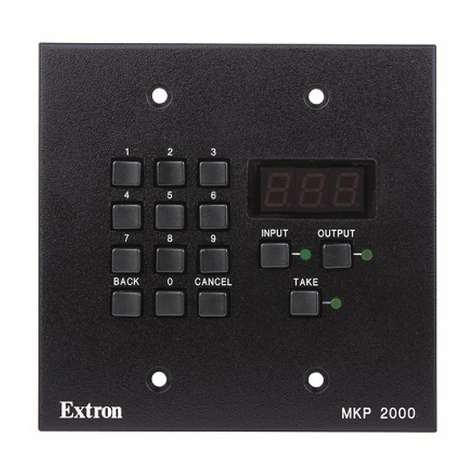
Extron electronics
Extron electronics MKP 2000 user manual

Pujol
Pujol SHYRA AC F SL 600 PJ installation manual
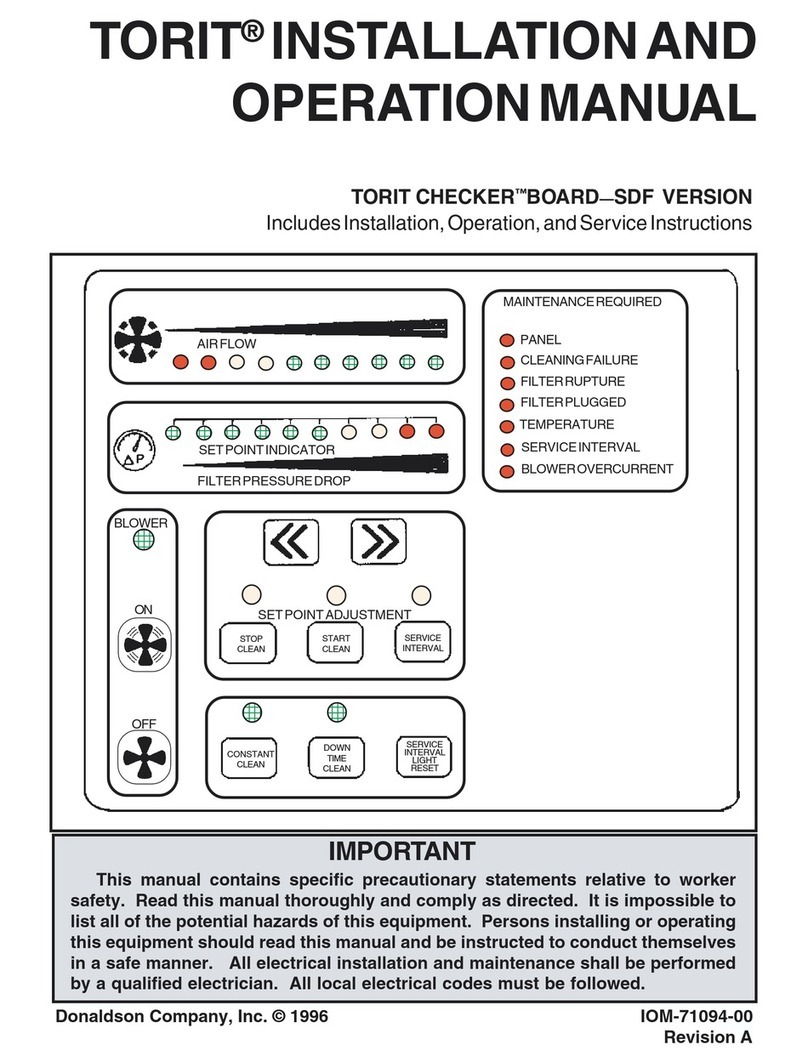
Donaldson
Donaldson Torit Checker SDF Operation manual

Bosch
Bosch FPA-5000 System Information
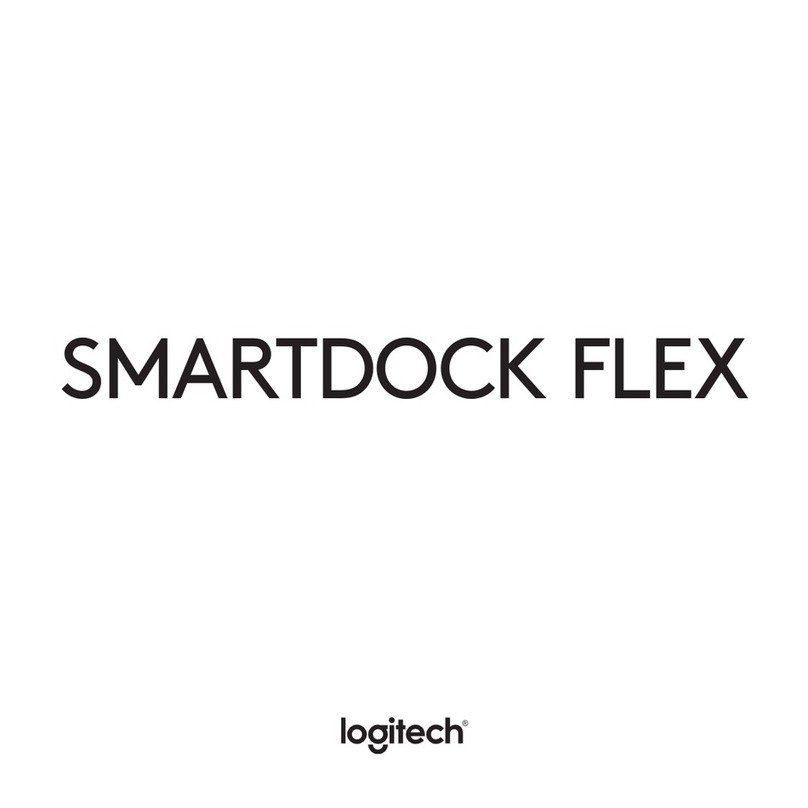
Logitech
Logitech SMARTDOCK FLEX manual
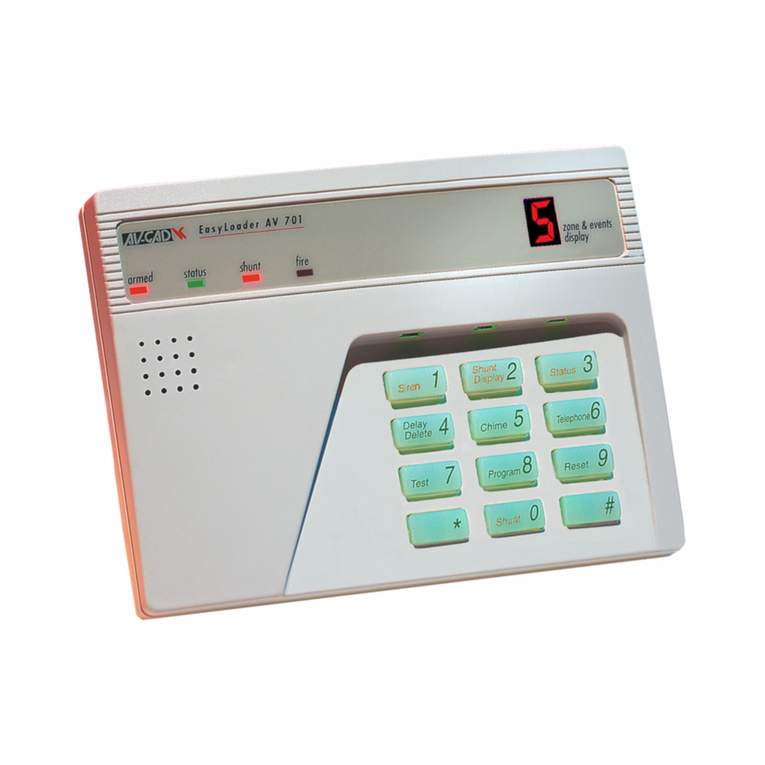
AV-GAD
AV-GAD EasyLoader AV-701 End user operating manual
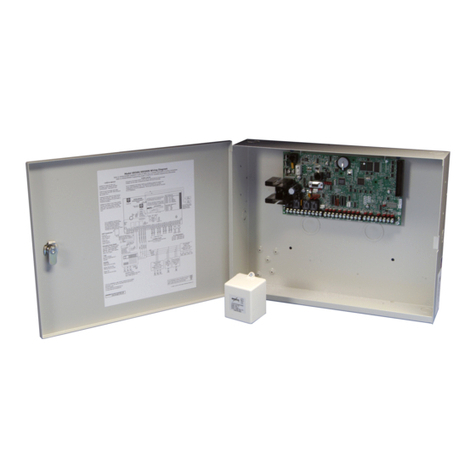
DMP Electronics
DMP Electronics XR150CAN Series installation guide
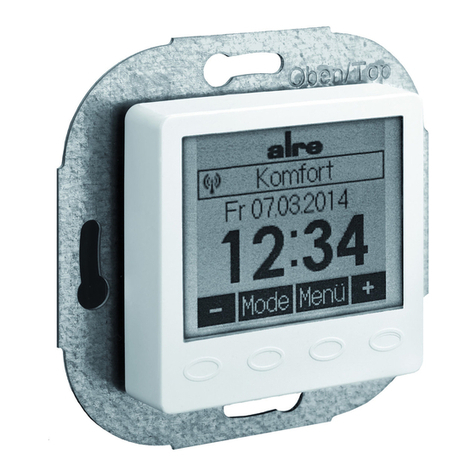
alre
alre b@home FTRCUd-210.021 operating instructions
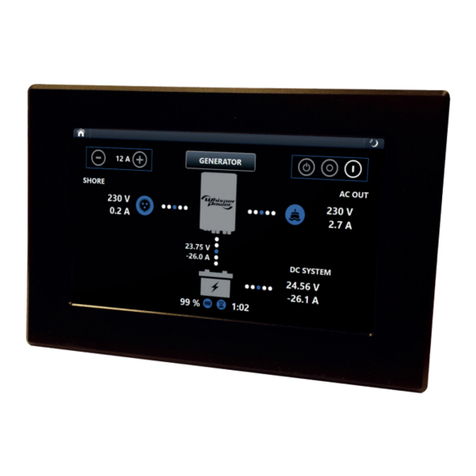
WhisperPower
WhisperPower WhisperTouch WP-TOUCH 5 User & installation manual

ergolutions
ergolutions 10001 manual

